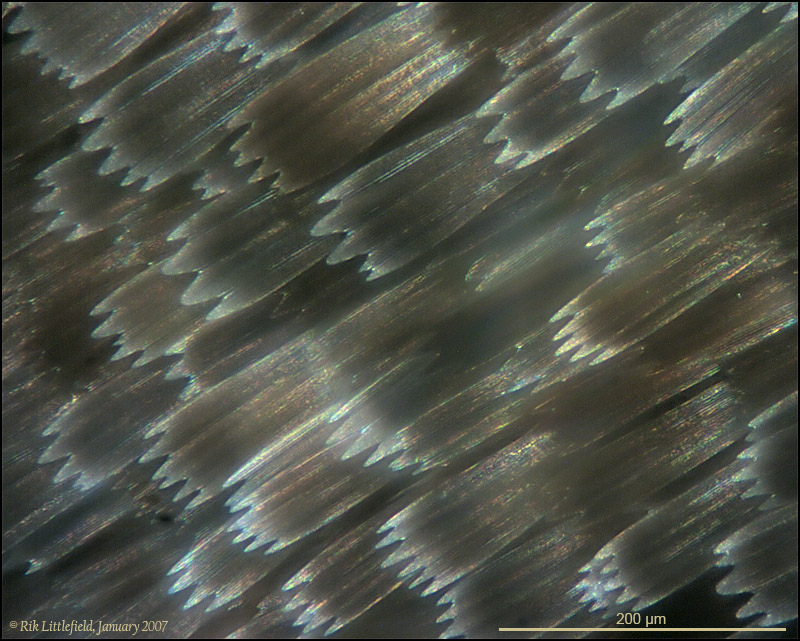
10X NA 0.25 objective, direct projection onto the image sensor of an Orion StarShoot Solar System Color Imaging Camera II.
Halogen fiber illumination, slightly diffused through a pingpong ball.
Stacked, 51 frames, shot at 7.5 frames per second (7 seconds total acquisition time).
This camera is basically a bare sensor, 1280x1024 pixels, 6.4x5.1mm, with a USB-2 interface. It's not a particularly good camera (as one might expect for <$200 delivered), but maybe it's a useful surrogate for much better cameras that I expect to show up in the next few years. I'm hoping to use it to get a feel for what one can do shooting deep stacks fairly quickly.
Normally I'd shoot a stack like this using bellows and a milling table, and post the image over in the macro forum. But in this particular case, it was easier to get a quick look by leaving the objective mounted in a microscope and "stepping" focus with the microscope stage by continuously turning the fine focus knob while the camera & software collected an .avi file. The optics are the same, but the mechanics must make it a "micro" shot, right? Oh well, who cares -- it is what it is and here's where I'm putting it.
Hope you find this interesting,
--Rik

